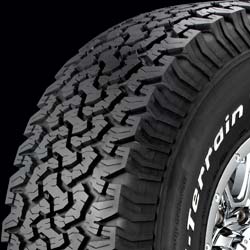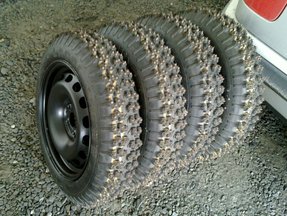Types of Tires
All Weather Tires: These tires are built around being appropriate for any environment. They are harder rubber than winter tires. Their purpose is to be able to handle dry, wet, and lightly snowed on roads. Because it’s not possible to satisfy all of the driving conditions, they are not exceptional in all conditions. Rather, they are decent in any. The colder the temperature, the harder the rubber is. This creates less surface area for which the tire to connect to the ground with.
Winter Tires: Generally soft rubber with or without studs. The soft rubber helps increase the frictional coefficient, enabling the vehicle to gain more traction on icy surfaces. The studs dig into the surface on which the wheel is in contact with, creating more traction.
Summer Tires: Because of the high frictional coefficient of a dry summer road, these tires are generally harder rubber. This means that they will wear less, and last longer than winter tires.
Ice Tires: Studded or non-studded tires that have screws or bolts through them to provide a digging effect, which works on ice. This greatly increases the coefficient of friction because of the digging effect. Force is not only on the surface of the ice or hard packed snow, but also at small depths where the spikes reach. With these tires, acceleration doesn't only rely on the coefficient of friction, it's also aided by the shear stress of the surface its driving on.
Racing Slicks: Smooth tires that are often used for auto racing. By eliminating treads, it maximizes the contact surface of the ground and the tire. These provide far more traction on dry roads, but incredibly less on roads that are wet or icy. Because of their smooth surface, hydroplaning can easily occur.




